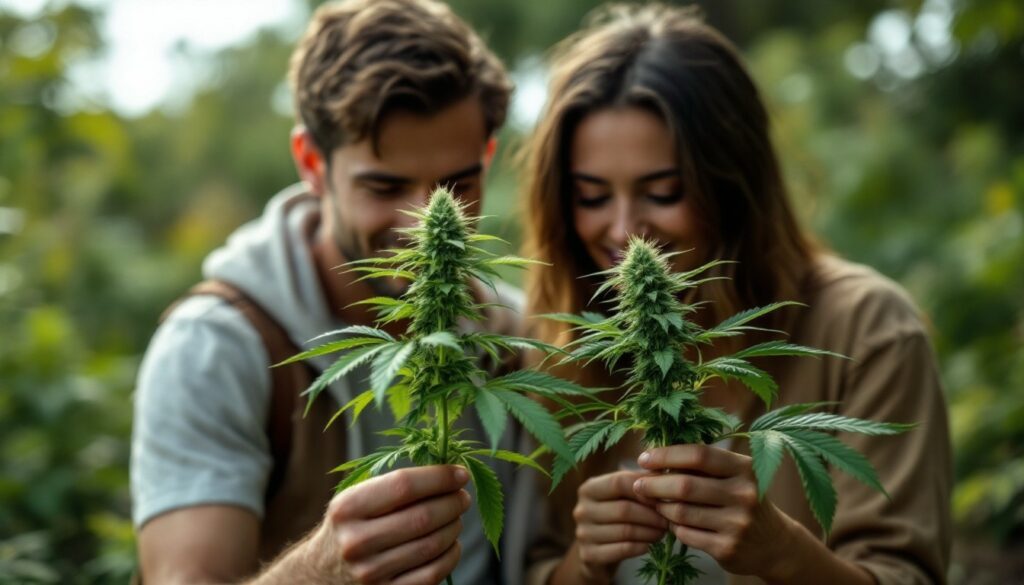Cannabis is a fascinating plant, rich in varieties and diverse uses. Two of the most well-known and widely consumed are cannabis sativa and cannabis indica. This article explores these two strains in depth, highlighting their key differences. Geographical Origin of Sativa and Indica Strains Geographical origin is one of the primary criteria that differentiates cannabis sativa from cannabis indica. Sativa traditionally has its roots in equatorial regions such as Central and South America, Southeast Asia, and parts of Africa. Indica, on the other hand, originates from the mountainous regions of the Hindu Kush, covering areas such as Pakistan, Afghanistan, and Tibet. These different geographic regions have strongly influenced the physical and biochemical development of each strain. To better understand how certain cannabis compounds, such as THC, affect our bodies, check out this article on THC. Environmental Influence on the PlantThese diverse geographic environments have shaped not only the physiology but also the traditional uses of these plants. Climatic diversity has allowed each type to develop with unique characteristics adapted to its natural habitat.
Sommaire
ToggleSativa:
Warm, sunny climate, strong resistance to prolonged heat.Indica: Cold regions with severe winters, strong resilience to cold.
Plant Size and Leaf ShapePlant size and leaf shape are important visual markers for distinguishing sativa from indica. In general, Cannabis sativa grows taller, often reaching 3 to 6 meters in its natural habitat. Sativa leaves are generally thin and long, allowing light to pass through them more easily, a perfect adaptation to the tropical climates where it thrives.Cannabis Indica Characteristics
In contrast, indica is generally more compact, rarely taller than 1.5 meters. This smaller size is explained by its ability to adapt to harsher mountain climates.
Its leaves are broad, thick, and dense, efficient at capturing maximum light in more difficult growing conditions. Flowering Period: A Key Distinction The
- flowering period is a crucial aspect that varies between these two types of cannabis. Cannabis sativa tends to have a longer flowering period than indica, lasting up to 16 weeks.
- This extended flowering period is explained by its tropical origin, where the seasons are not marked by drastic changes in day and night length. Comparison with Indica
In contrast, cannabis indica flowers quickly, generally between 8 and 12 weeks. This results from its need to complete its reproductive cycle during the brief summer periods in mountainous regions. If you’re interested in discovering another intriguing form of THC, delta-10 THC might interest you.
Characteristics Sativa Indica Flowering Period Up to 16 weeks
8 to 12 weeks Size 3 to 6 meters
Up to 1.5 meters
Leaf Shape
Long and thin
Wide and robust
Energizing or relaxing effects: how to use them? The use of sativa and indica also differs due to their contrasting effects on the user. Cannabis sativa is known for its energizing effects, often stimulating creativity and providing a welcome mental elevation. This strain is recommended for daytime activities requiring focus and energy, and is sometimes used to relieve certain depressive symptoms thanks to this positive stimulation.
The relaxing benefits of the indica strain
Cannabis indica
is associated with more physically relaxing effects. It promotes muscle relaxation and can be beneficial for those seeking relief from physical pain or insomnia. As such, this strain is often preferred for nighttime use, facilitating rest and overall relaxation after an intense day. CBD, THC, and Therapeutic Use
| Another point of contention concerns the levels of | CBD | and |
|---|---|---|
| THC | present in each strain. Cannabis sativa has a higher content of THC, the psychoactive component, which contributes to its stimulating and euphoric properties. | Conversely, indica generally contains a higher level of CBD, a non-psychoactive cannabinoid known for its calming and medicinal effects. Therefore, cannabis indica is often preferred for therapeutic use. Specific Therapeutic Applications |
| These properties mean that each strain is used for different purposes in alternative medicine: | Sativa: | Used to stimulate appetite in patients with eating disorders and improve concentration in cases of attention deficit disorder. |
| Indica: | Recommended to reduce anxiety, aid sleep in chronic insomnia, and alleviate muscle spasms. | Cannabis Sativa vs. Indica: Frequently Asked Questions |
What are the main differences between sativa and indica in terms of cultivation?
The main difference lies in size and preferred climate. Sativa generally grows tall, often in warm, tropical climates, while indica is suited to cooler, mountainous climates, with a more compact structure. What effects can we expect from cannabis sativa compared to indica? Sativa is known for its energizing effects and may promote creativity and mental stimulation. Indica is preferred for its relaxing and calming effects, often used for physical relaxation and deep sleep.How do you choose between sativa and indica for therapeutic use?
It all depends on your needs: sativa is recommended for situations requiring energy and focus, ideal for treating depression. Indica, with its tranquilizing effects, is better suited for managing anxiety, physical pain, and improving sleep.
Why is the choice of flowering period important for growers?
The flowering period impacts cultivation planning, especially in locations where the season length allows for limited production. Knowing the flowering time helps growers maximize their yield according to local conditions.
Alexandre Lacarré is recognized as an innovative and influential leader in the cannabidiol (CBD) industry. Alexandre began his career in the biotechnology sector, where he gained valuable expertise in research and development. Passionate about the therapeutic potential of natural compounds, he quickly shifted his focus to the nascent CBD industry.



